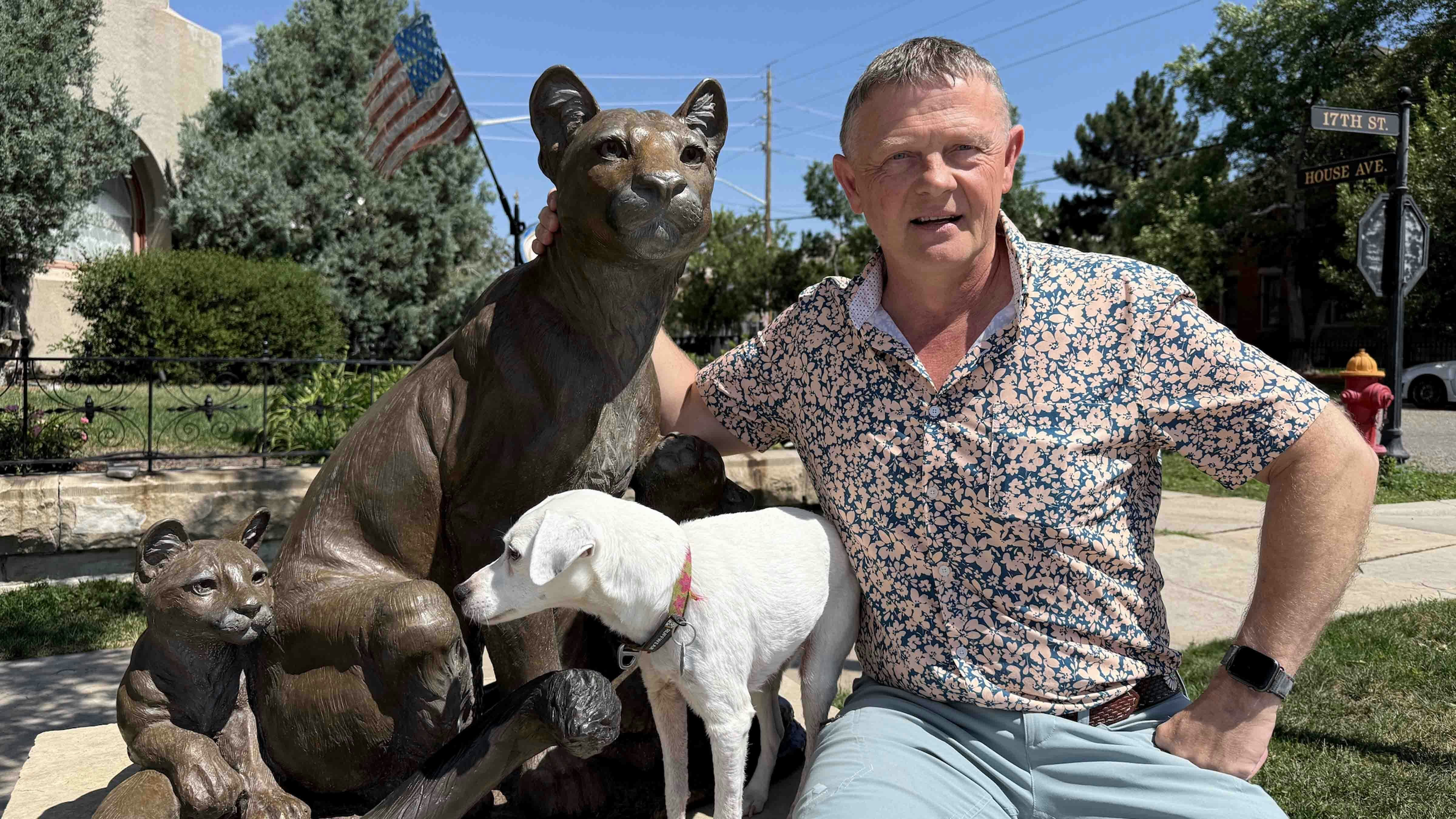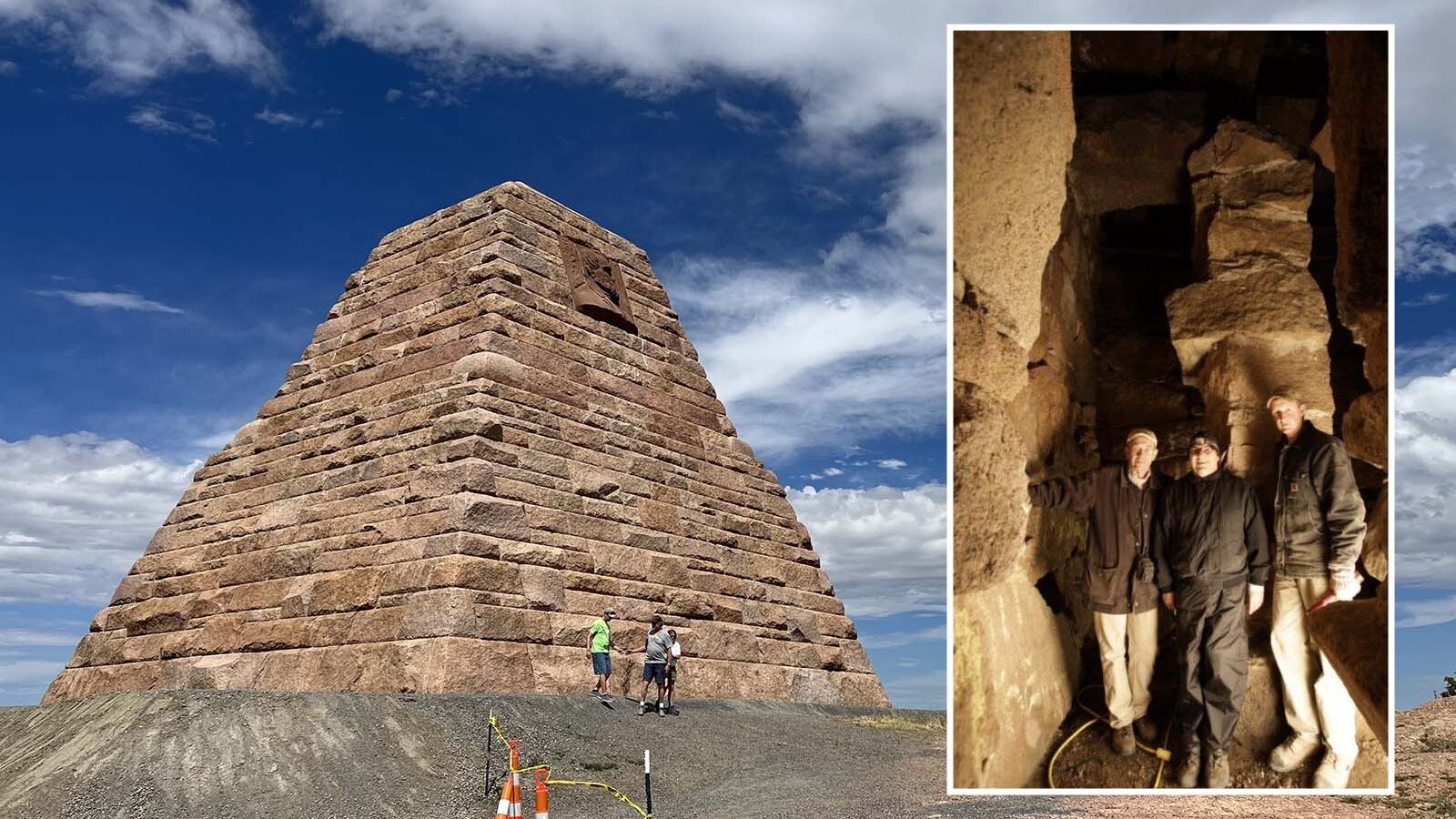CASPER — He’s more than a legend in American aviation, widely considered the greatest American pilot of all time. Even before he became the first human to break the sound barrier in an airplane, Chuck Yeager was larger than life.
During his short time stationed in Wyoming at Casper Army Air Base as part of the 357th Fighter Group, a young Yeager did more “wrong stuff” than “The Right Stuff” that author Tom Wolfe would famously write about a few decades later.
It was just prior to the attack on Pearl Harbor, and some of Yeager’s escapades while on the ground included hunting deer that he and a buddy dropped with carbines and gutted one night for presumed future meals.
On another occasion, he armed a machine gun on his fighter plane and brought down several antelope from the air.
The future test pilot also experienced his first real aircraft crisis when he had to eject as smoke filled the cockpit of his fighter and it went down in flames.
In his 1985 autobiography “Yeager,” then Gen. Chuck Yeager and co-author Leo Janos wrote how his 363rd Fighter Squadron of P-39 fighters was sent to Casper in 1943 to train prior to their deployment to Europe. As a West Virginian who grew up hunting in the hills around his home, Yeager was impressed by the wild game he saw from his cockpit around the Casper region.
‘Great Hunting’
“Wyoming was great hunting,” he wrote. “The ranges were full and because of the war, no one was hunting those big herds of deer and antelope.”
Base chow did not sound as good as fresh venison.
On one expedition, Yeager told how he and a buddy took carbines and shot six deer and brought them back to base. He cleaned the deer and apparently planned on eating the venison. Yeager wrote that he later learned that a Sergeant Miller who worked the flight line knew how to make antelope roasts and steaks.
A plan was hatched.
Yeager would fly his P-39 and herd the antelope to a prearranged spot where the sergeant and a few other enlisted men would shoot them. The hunt didn’t go exactly as planned, however.
“I took off in the P-39 and began herding the antelope toward the road where Miller and his boys stood waiting,” Yeager wrote. “I charged one of the guns and laid about 10 antelope at their feet. Roast would be the main course at the big squadron blowout before we left for Europe.”
Yeager’s available weapons on the aircraft were a 37 mm cannon in the nose of the P-39 fighter and four 50-caliber machine guns, one on each wing and two in the nose of the aircraft.

Violators Will Be Prosecuted
Had Wyoming Game and Fish Department learned about his antics at the time, Yeager’s autobiography may also have included some time spent in court, stiff fines and possibly worse.
And with a criminal prosecution, potential for a dishonorable discharge and an end to his history-making aviation career before it had really got off the ground.
Wyoming Fish and Game’s Game Warden Supervisor for the Cody Region Scott Werbelow questions how much meat would be left on those antelope after being blasted with machine guns.
“It certainly is not an ethical or fair chase, and if he was using that high-powered of a rifle and shooting them on the run, chances are that there was not a lot of good meat left when he was done shooting,” Werbelow said.
Werbelow said he’s not familiar with what the hunting regulations in Wyoming were in 1943, but the fines Yeager would have faced would be cheaper than today. Yeager also would likely have faced a judge if the incident were reported.
The first thing game wardens would consider, Werbelow said, is whether it was deer or antelope season and if Yeager had the appropriate licenses to take the game.
“Right now, if he were do to that, if it was out of hunting season, it would be a hunting during a closed season (violation) for an $820 fine,” he said. “There is also a hunting without an antelope license, which is an $820 fine.”
Werbelow said if he shot the antelope and left them lay, a wanton destruction of big game charge would have sent him before a judge. Letting the antelope go to waste would have been another $450 fine.
“In a case like this we could coordinate with the feds and they could charge him with the airborne hunting act, and I don’t know what those regulations are but I’m guessing you can’t shoot antelope from an airplane,” he said. “And then the last one we would have would be harassing wildlife with a motorized vehicle and an airplane would be considered a motorized vehicle.”
The fine?
“That could be a $450 fine,” Werbelow said. “It’s the totality of the circumstances, he could be arrested and lose his hunting privileges and those kind of things.”
The Crash
While Yeager got away with securing his antelope roast or steaks for the squadron party, he almost didn’t make it to the party.
A couple of weeks before the unit headed for Europe, he found himself flying in formation at about 400 mph and dealing with a major crisis.
In his autobiography, Yeager describes being at his aircraft’s controls and hearing “a roaring explosion in the back. Fire came out from under my seat and the airplane flew apart in different directions.”
He bailed out and was knocked unconscious.
“A sheepherder found me in the hills and tossed me across his burro face-down,” Yeager said.
In his book, Yeager wrote: “I remember the date: Friday, Oct. 23, 1943.”
Yeager’s autobiography recollection does not exactly reflect a crash report on file at the Wyoming Veteran’s Memorial Museum. That shows the day was actually Oct. 21, 1943. His plane went down 20 miles southwest of Casper at 8:23 a.m.
In 1943, Yeager wrote that the plane had acted normally, and he was flying in the “third position” of a combat formation and practicing passes on a B-24 bomber.
“On my second pass, I noted my coolant and oil temperatures go up, then smoke came boiling out from under the seat,” he reported. “The ship was on fire so I bailed out.”
Skies were clear at the time of takeoff and Yeager, who earned his wings March 10, 1943, had logged 329 hours in P-39s.
Formal Crash Conclusion
The formal investigation by base officers hints of the possibility the aircraft could have been brought back to base.
“On 21 October 1943, P-39 42-19508 took off from the Army Air Base, Casper, Wyoming on a combat formation mission at approximately 0800 MWT (Mountain West Time),” the report states. “The ship was in the air and functioning properly approximately (for) 30 minutes when the coolant and oil temperature rose to a dangerous point.
“Immediately after the rise in temperature, the pilot states that a coolant smelling smoke started boiling into the cockpit from under the pilot seat. The pilot decided the ship was on fire and due to the extreme danger of explosion chose to bail out rather than attempt to fly the ship back to the field.”
Neither Yeager’s original statement nor the formal investigation by military officials has any information to substantiate that the aircraft “flew apart” from underneath him.
Instead, the official report concludes: “After the pilot bailed out, the ship crashed and burned to such as extent that no parts were salvageable.”
The investigation was signed by the base commander, bomb group commander, base operations officer, flight surgeon, base technical inspector and intelligence officer. They had no recommendations regarding the crash.
Their conclusion: “Fire in engine believed to be caused by failure in the coolant system.”
Finding Fame
Yeager would go on to Europe and become a heralded fighter pilot. On one day he shot down five German fighters. He was also shot out of the sky, parachuted out of his plane and miraculously escaped capture with the help of French resistance fighters.
In the 1950s and 1960s, Yeager’s role as a test pilot where he broke the sound barrier and piloted near space flights helped pave the way for the nation’s space program. Portrayals of Yeager in Wolfe’s book “The Right Stuff” and a 1983 movie based on the book further enhanced Yeager’s fame and achievements.
As a hunter, Yeager’s desire for antelope roasts never waned. He returned to Wyoming on several occasions as part of the One Shot Antelope Hunt.
An Aug. 26, 1998, story in the Casper Star-Tribune chronicled his planned participation that year in which, under the rules, the team of hunters with the shortest combined time to kill an antelope with one shot won.
“Yeager, a World War II fighter pilot and the first man to break the sound barrier, killed antelope in the 1984 and 1989 hunts,” the paper reported. “This year, Yeager will team up with Randy ‘Duke’ Cunningham, a Californian congressman and the first ace of the Vietnam War, and Clarence ‘Bud’ Anderson, also an ace and test pilot.”
Apparently, Yeager never forgot what he learned during his time in the Cowboy State in 1943 that “Wyoming was great hunting.”
Contact Dale Killingbeck at dale@cowboystatedaily.com
Dale Killingbeck can be reached at dale@cowboystatedaily.com.












